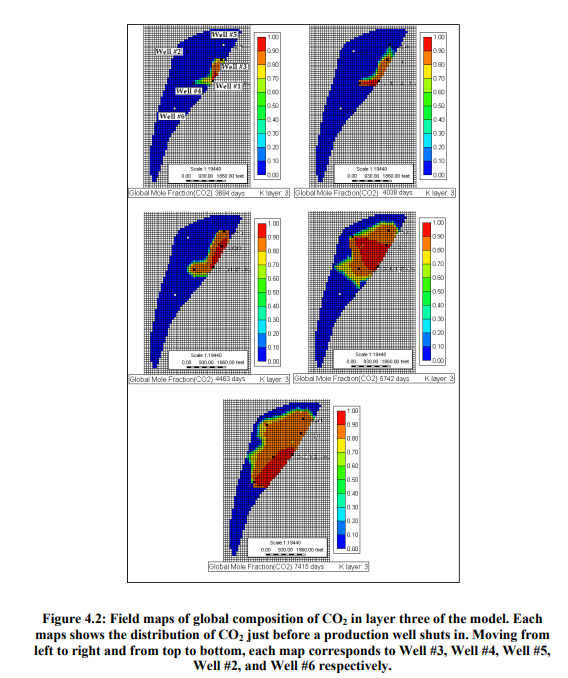Simulation study of sweep improvement in heavy oil CO2 floods
CMG软件的应用情况
-
流体特性分析:使用WINPROP®软件进行流体特性分析,包括组分重组、相图匹配、PVT数据回归等,以建立准确的油藏流体模型。
-
油藏模拟:使用CMG-STARS®和CMG-GEM®软件进行油藏模拟,研究不同的提高采收率方法,如连续二氧化碳注入、水气交替注入(WAG)和剖面修改。通过模拟,评估了这些方法在提高波及效率和油回收率方面的效果。
-
敏感性分析:通过CMG软件进行敏感性分析,研究了不同参数(如WAG比例、阻塞剂注入半径等)对油回收率的影响。
作者单位
Abstract
Enhanced oil recovery by CO2 injection is a common application used for light oil reservoirs since CO2 is relatively easily miscible with light oils. CO2 flooding in heavy oil reservoirs is often uneconomic due to unfavorable mobility ratios. Reservoir heterogeneity further complicates the process as CO2 channels through high permeability layers leading to premature breakthrough. However, this can be controlled by choosing a suitable modification to the CO2 injection process enabling better sweep efficiencies, and making the process economic. The current work focuses on two such methods; water-alternating-gas injection (WAG) and profile modification by blocking gas flow in the high permeability layer. These methods were studied for physical mechanisms of oil recovery, increasing sweep efficiency, and mitigating premature breakthrough.
Reservoir simulation studies of these methods were conducted using an analog heavy oil (14° API) field with a high permeability streak which had 50 times greater permeability than the adjacent zones. A detailed fluid characterization was performed to accurately represent the reservoir fluid. Slim tube and core flood simulations were interpreted to understand the physical mechanisms of oil recovery for this crude. Profile modification using a blocking agent showed very encouraging results. Different WAG ratios were also evaluated, and a WAG ratio of 1:1 resulted in the highest oil recovery which was consistent between both core flood simulations and field simulations. This is different from WAG ratios for highest recovery in light oil reservoirs where values of 1:2 are typically seen. It is shown that with careful study of the reservoir geology and fluid properties, application of these methods can significantly improve sweep efficiency and oil recovery in heavy oil floods.


